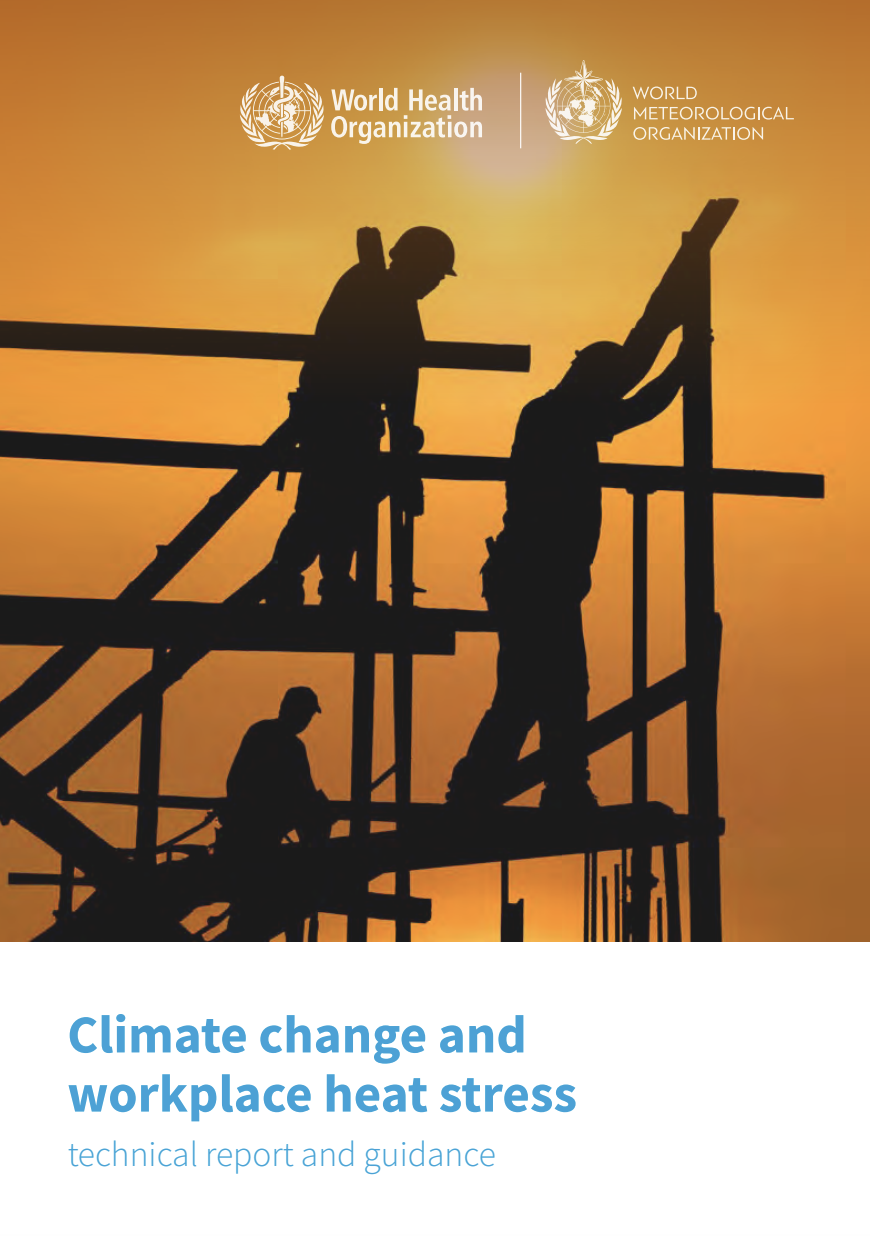Climate Change and Workplace Heat Stress: Technical Report and Guidance
Organization: World Health Organization (WHO), World Meteorological Organization (WMO)
Year: 2025

As record-breaking heat puts workers’ health and livelihoods at growing risk, the World Health Organization (WHO) and World Meteorological Organization (WMO) have released new joint guidance on workplace heat stress, the first such global guidance since WHO’s last report on the topic in 1969.
The report provides evidence-based recommendations to protect workers from rising temperatures and outlines practical measures to safeguard both health and productivity.
The new guidance highlights ten key actions for protecting workers in agriculture, construction, and other heat-exposed sectors:
- Combine exposure prevention and health surveillance to reduce heat stress, manage physiological strain, and prevent both short- and long-term health effects.
- Develop targeted programmes with specific interventions for high-risk workers and workplaces.
- Design comprehensive advisories that account for weather, clothing, work type, intensity, duration, payment methods, and adaptive strategies.
- Prioritize vulnerable populations, including older workers, those with chronic conditions, and individuals with lower physical fitness.
- Strengthen medical awareness and training to improve recognition, treatment, and prevention of heat-related conditions.
- Engage key stakeholders such as employers, workers, unions, occupational health experts, and local authorities.
- Ensure feasibility, viability, and sustainability so policies remain practical, cost-effective, and environmentally sound, with measures covering prevention, acclimatization, monitoring, training, and emergency planning.
- Explore technological solutions that can enhance both safety and productivity.
- Monitor and evaluate effectiveness of policies and advisories to ensure maximum protection.
- Integrate climate action, recognizing that tackling climate change is central to reducing future heat risks.